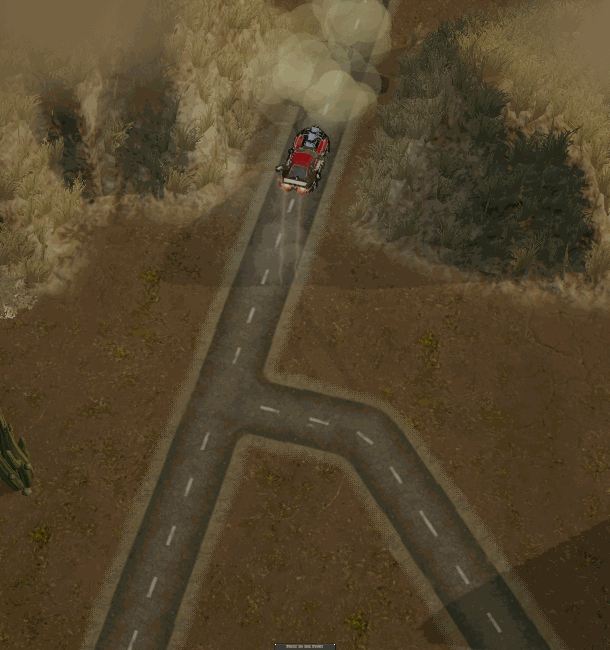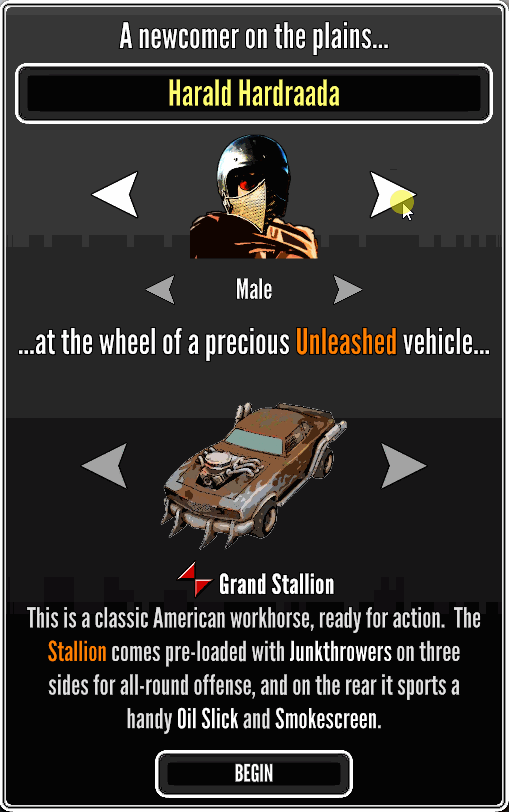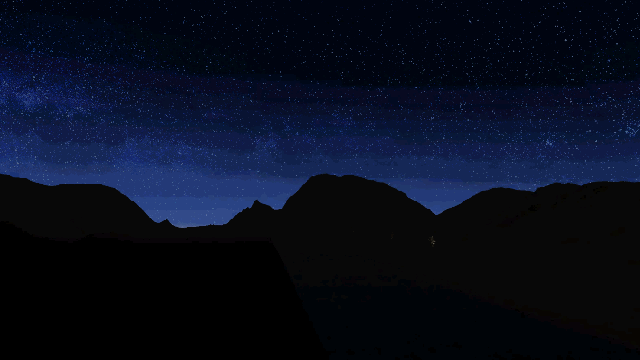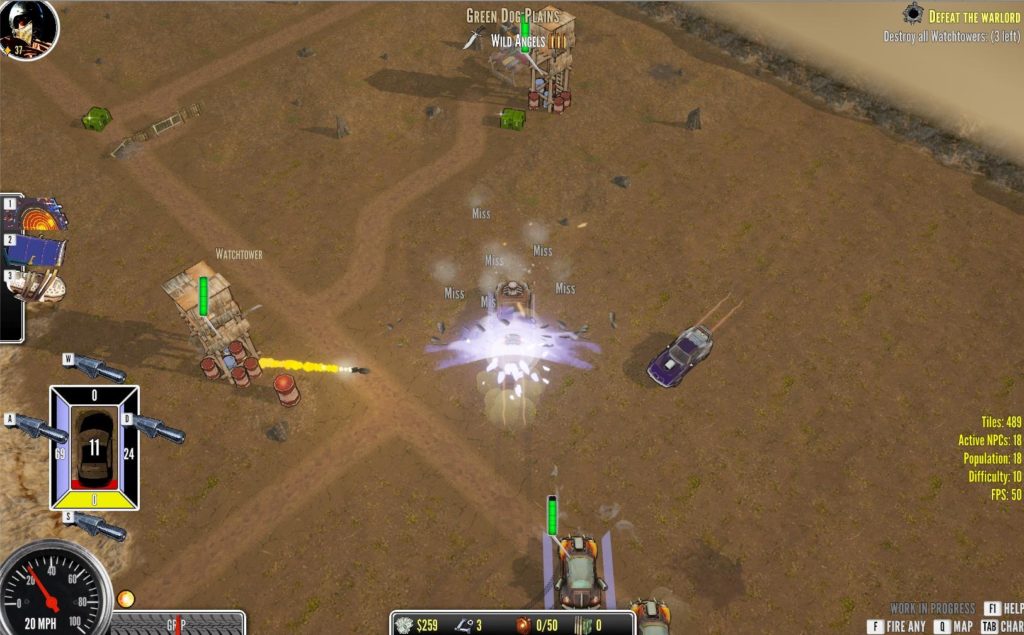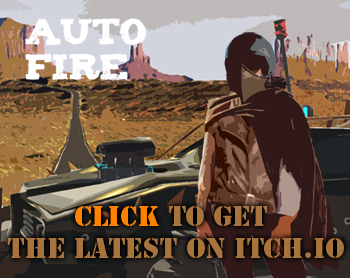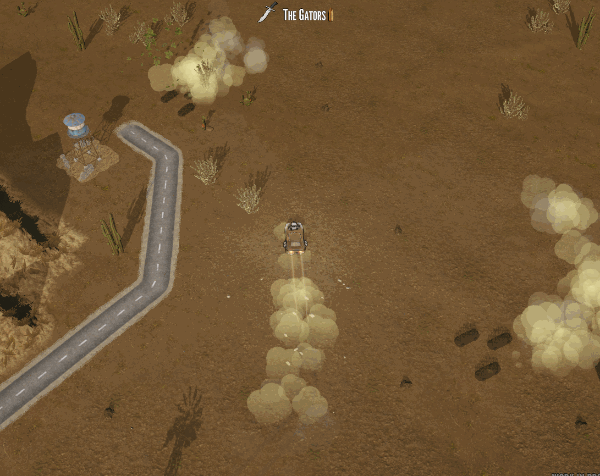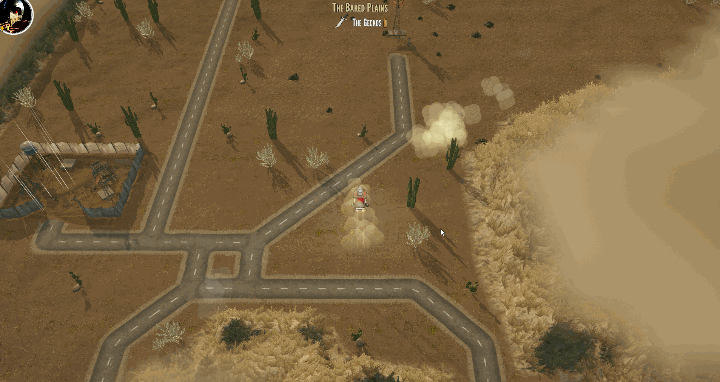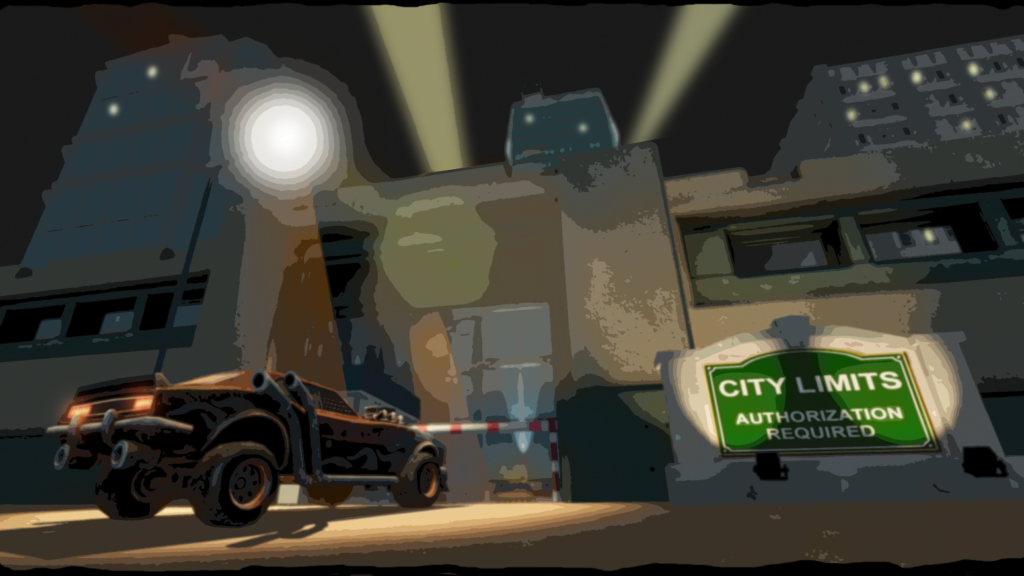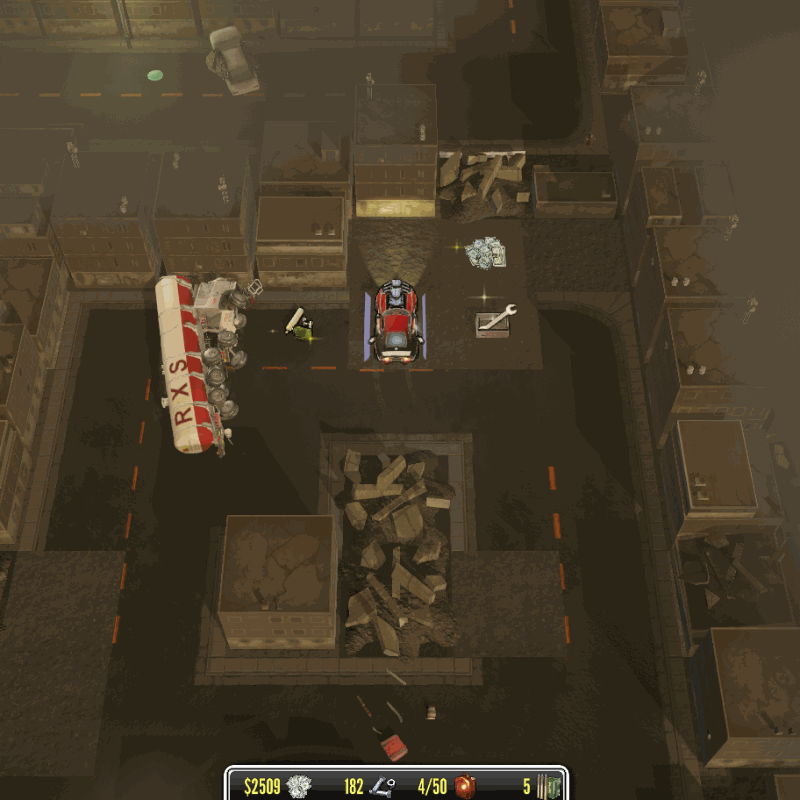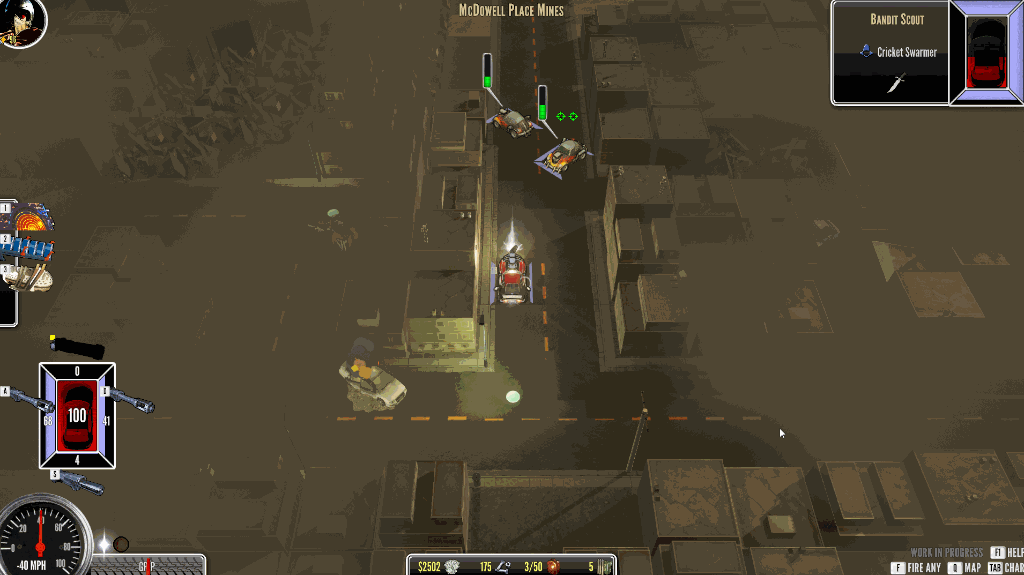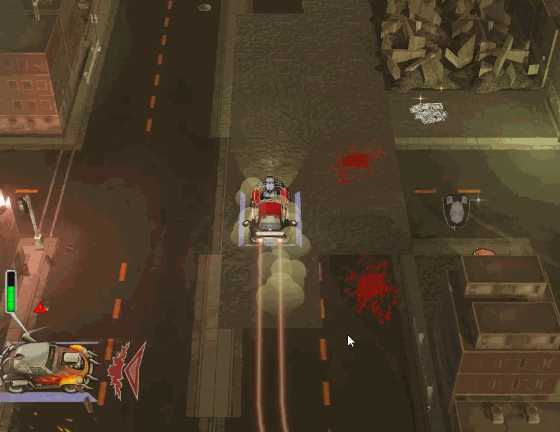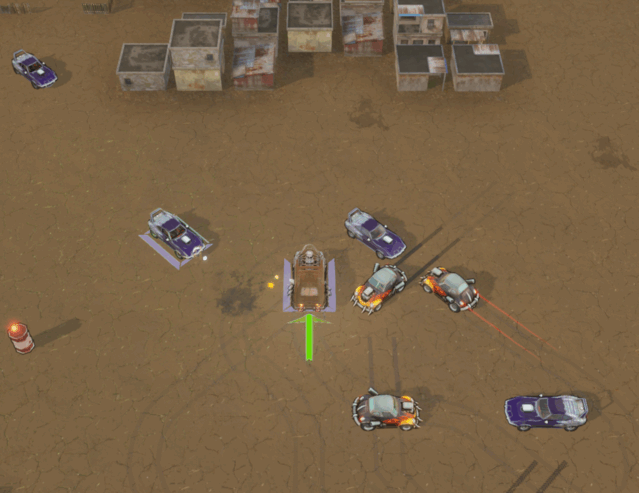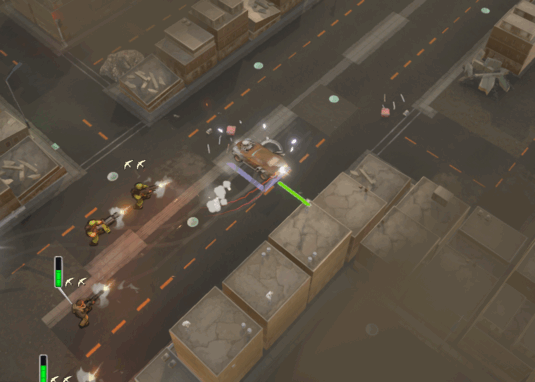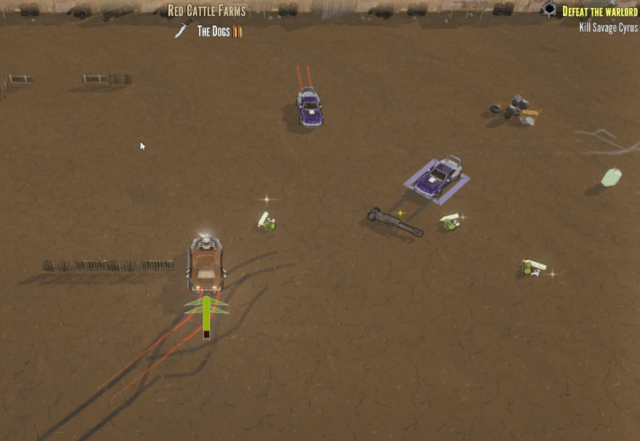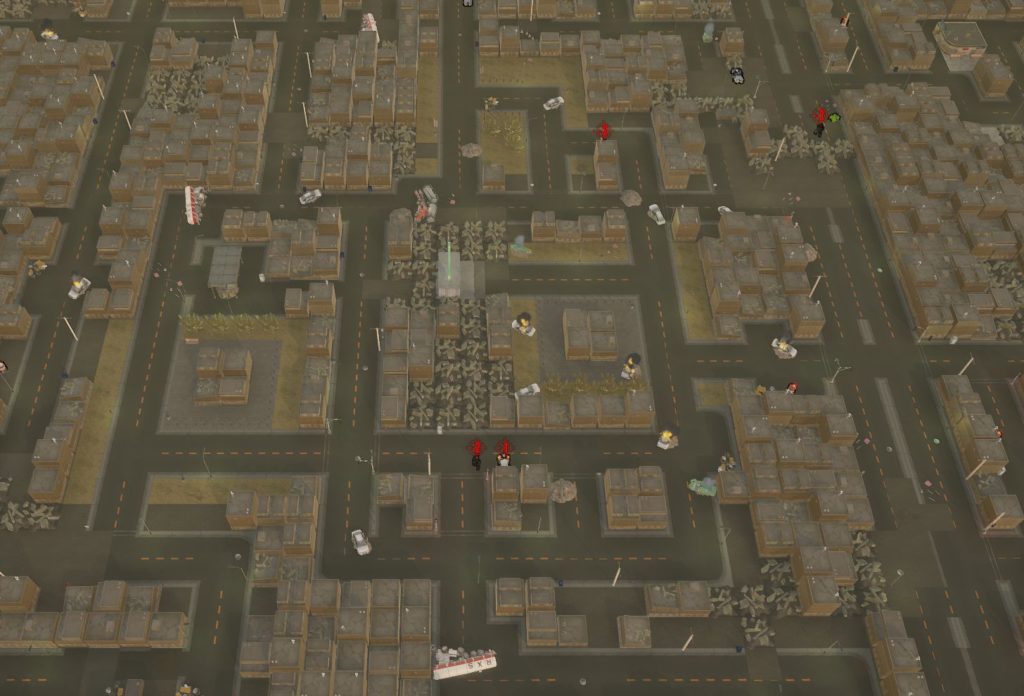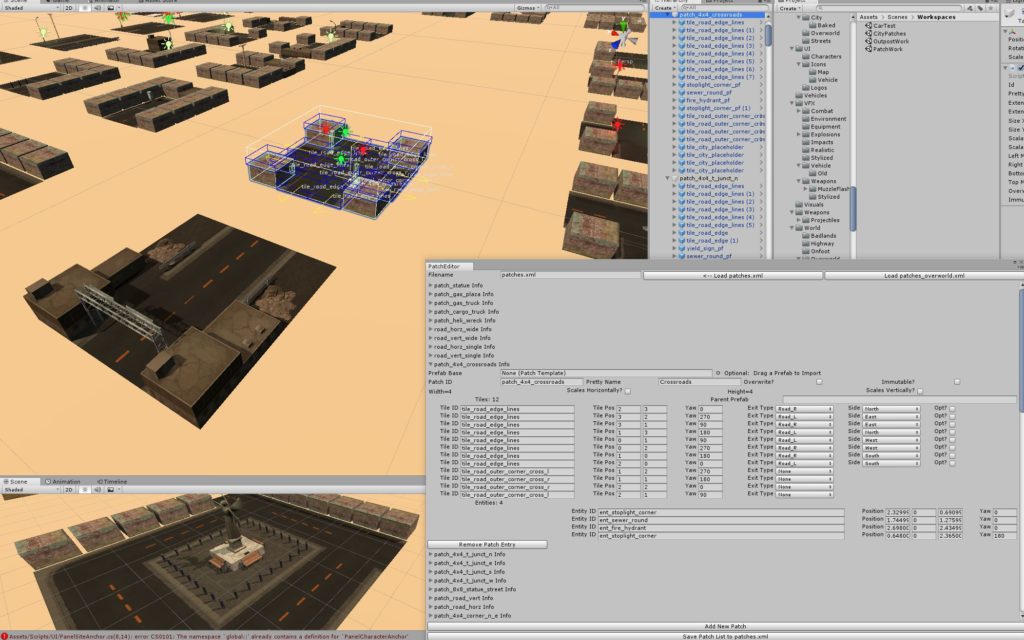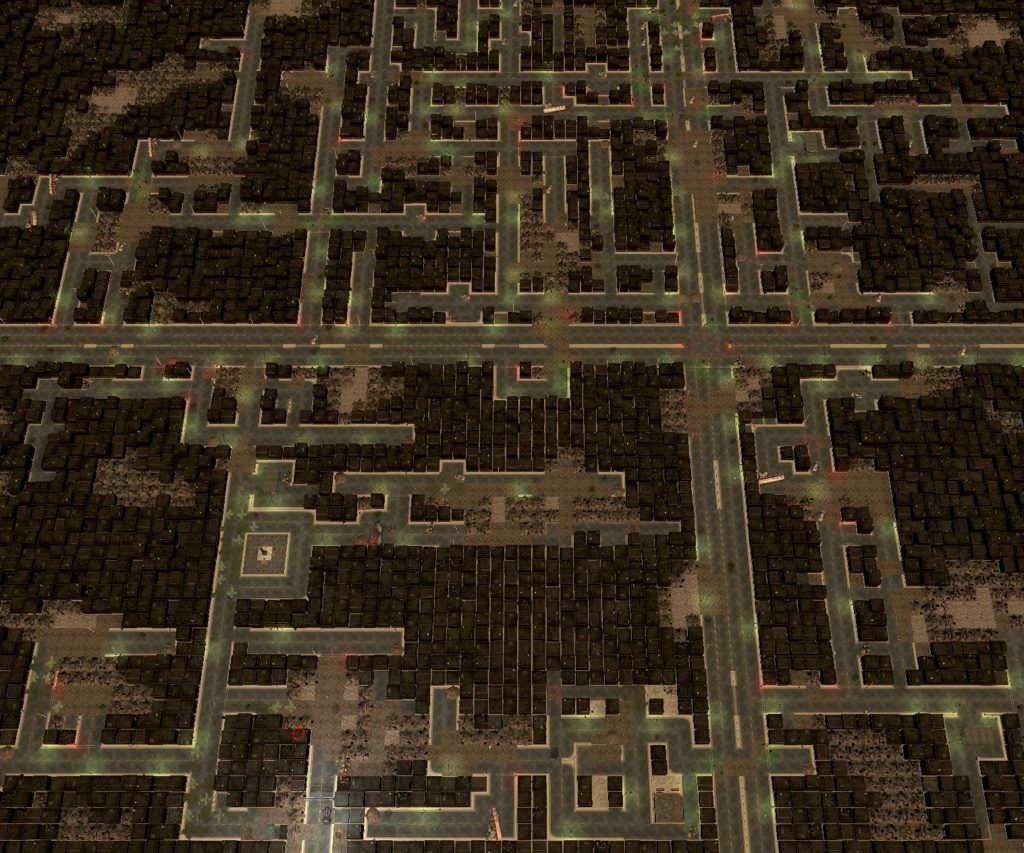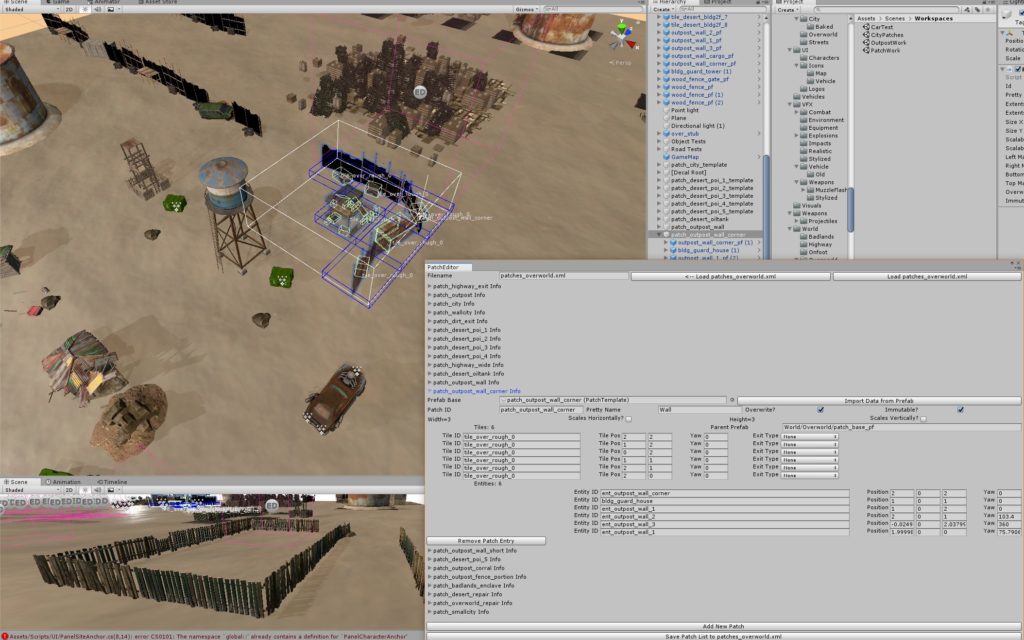I am rolling off of a bunch of updates by the first coder to touch Auto Fire outside of me… My friend Jim streamed his work this past Saturday and Sunday and helped get some cool functionality in that I hadn’t done before.
Along the way he also added some Quality of Life improvements to some of the code, for his convenience but of course it will be helping me even more. Friends are nice to have!

In particular, I’m looking to snarf some of that ram functionality to wrap it up into a couple vehicle gadgets: A Ram Piston and… a Bootlegger somethingorother. Plus it lays the foundation for me to knock enemies around as the result of player action… something that ramming desperately needs.
For the time being, the new build has some fancy new features:
Critical hits
Weaponry now has a critical hit functionality when fired… By default a weapon has a 5% of delivering a critical hit, with a crit dealing 2.5x damage. You can improve that crit chance by 25% by painting your targets with radar (the 1 key) before attacking. Sustained fire does still improve your chance of hitting (as does radar painting) but only radar enhances crits.
Critical hits are a core method with which I want to handle skill improvements, electronic warfare, and general hit bonuses. Improvements to hit chances are also in there somewhere, but I don’t want to have a lot of shots missing in the game… that can be frustrating. Hopefully this will be a whole new angle by which players can decide what to do next.

Revised repair functionality
While gas and ordnance still cost cash to purchase, repairs to your car now need precious parts to fix up. You can refill your resources and make repairs in 10-unit portions now, rather than in an all-or-nothing fix.
Resources will become all-important as time goes on, an cash will mainly be focused on acquiring new gear, doing deals, making bribes, and so on.
Improved smoke screens
Smoke screens are a staple of car combat, but to date it hasn’t really been effective at getting anyone off your tail. I already had wide smoke screens but decided that it should be the norm… you should feel good about spending your action using one if you are in trouble. These wide smoke screens will nearly fill a roadway, to help you make an emergency escape… It really can deliver the goods.

…and other stuff
- Gas now informs you if you are full and can’t pick up any more.
- Some improvements to UI and feedback
- Menu/UI Usability improvements.
- Links to the help page and Discord from within the game.
- A few additional bugs fixed.

